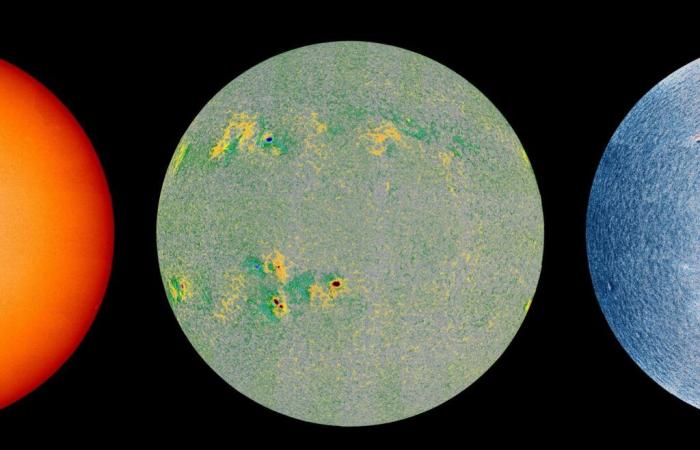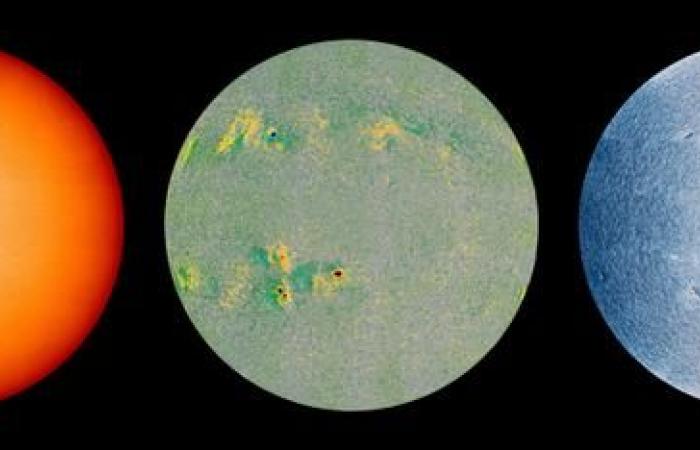These three colored discs, published by the European Space Agency (ESA), on November 20 – with a fourth with more explosive contours – are photos of the Sun taken by the Solar Orbiter probe, on March 22, 2023. Each is an assemblage of 25 images taken by the probe, then 74 million kilometers from the star. The orange ball, a classic visible light photo, reveals the gaseous surface whose temperature is between 4,500°C and 6,000°C. The spots are colder regions.
Read also | Article reserved for our subscribers Solar Orbiter, the probe that took off to “look the Sun in the eyes”
Read later
The greenish disk is a sort of planisphere of the Sun's magnetic field. This magnetogram shows that this field is concentrated in the regions of the spots and is oriented outwards (in red) or inwards (in blue). The same camera can record the movements of matter on the surface of the Sun (third disk), in blue when the matter approaches the lens and in red when it moves away from it. This tachogram reveals that the plasma is pushed outwards around the sunspots. These photos, of unrivaled quality, can be zoomed in spectacularly on the ESA website.
The fourth photo presented in this publication is that of the solar corona. This incandescent outer atmosphere is located above the photosphere, the visible surface of the Sun. It was photographed by the space probe's Extreme Ultraviolet Imager instrument. This 1-million-degree plasma follows magnetic field lines that extend out from the Sun and often connect neighboring sunspots.
8,000 pixel diameter
The quality of the images thus assembled makes it possible to observe details of the surface of our star. The ESA specifies in its press release that, in its mosaics of 25 photos, the solar disk has a diameter of almost 8,000 pixels.
With a total cost of 1.5 billion euros, the Solar Orbiter mission, piloted by the European agency and with which NASA is associated, took off in February 2020. By gradually leaving the ecliptic plane, that in which the planets evolve as they revolve around the Sun, it will be the first probe to photograph the poles of the day star.
The plane in which Solar Orbiter is orbited around the Sun will thus be inclined in 2027 by 24 degrees relative to the ecliptic, and up to 33 degrees in 2030. To resist the heat, a shield designed to withstand a maximum temperature of 520°C protects the probe and each of its ten measuring instruments or cameras is equipped with windows that only open when they are in operation.







